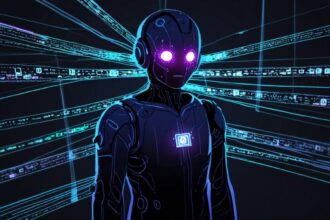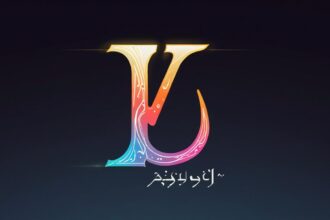OpenAI launches o3 and o4-mini, cutting-edge AI models capable of interpreting and manipulating drawings of any artistic quality, expanding AI capabilities beyond text to include interactive visual reasoning. Subscribers of ChatGPT Plus, Pro, and Team plans get immediate access amid growing competition and ongoing safety debates.
OpenAI has introduced its latest artificial intelligence models, designed to interpret and manipulate drawings and diagrams irrespective of the creator’s artistic skill. The new models, known as o3 and its smaller counterpart o4-mini, expand on the capabilities of the September release, o1, which concentrated on addressing complex problems through multi-step reasoning.
Users can now upload sketches ranging from whiteboard scribbles to casual napkin drawings, with the AI able to analyse these visual inputs effectively. The technology transcends simple recognition, enabling the AI models to perform operations such as rotating, zooming, and editing images autonomously.
Since the global surge in popularity following the release of ChatGPT in 2022, OpenAI has accelerated its development efforts beyond text-based models, venturing into multimedia applications. The company is positioning itself in a competitive landscape with rivals including Google, Anthropic, and Elon Musk’s xAI.
A significant feature of these new models is the integration of visual data directly into the AI’s reasoning processes, marking a notable shift from merely processing images to actively working with visual information in context.
Recent financial developments highlight investor confidence in OpenAI, with the company’s valuation reaching an estimated $300 billion as of last month. The same period saw their image generator gain viral popularity on social media for producing artwork inspired by Studio Ghibli.
Access to the o3 and o4-mini models has been granted immediately to subscribers of ChatGPT Plus, Pro, and Team plans following their announcement. However, OpenAI continues to face criticism over its naming conventions for AI products, with CEO Sam Altman acknowledging the issue and pledging to improve naming clarity by the summer.
Ongoing safety concerns accompany these technological advances. OpenAI’s updated policies now suggest possible relaxation of safety standards if competitors deploy high-risk AI systems without similar safeguards, a strategy that has prompted apprehension among industry observers. Transparency remains a contentious topic as well; the company recently removed safety testing mandates for some fine-tuned models and has refrained from releasing detailed documentation for GPT-4.1. Additionally, the launch of their Deep Research tool preceded the release of its safety documentation by several weeks, further intensifying scrutiny over OpenAI’s approach to responsible AI development.
Source: Noah Wire Services
- https://openai.com/index/introducing-o3-and-o4-mini/ – This page announces the release of OpenAI’s latest AI models, o3 and o4-mini, highlighting their advanced reasoning capabilities and ability to use various tools including image analysis, supporting the claim of these models being the newest in the series after o1.
- https://openai.com/index/thinking-with-images/ – This article explains how o3 and o4-mini models can think with images in their chain-of-thought, performing operations like rotating, zooming, and editing images autonomously, which corroborates the article’s statement about the models’ ability to manipulate drawings and diagrams irrespective of artistic quality.
- https://openai.com/index/o3-o4-mini-system-card/ – The system card describes technical details for o3 and o4-mini, including their multi-tool usage, visual perception, and reasoning improvements, affirming the article’s points about expanded capabilities and complex problem-solving with visual data integration.
- https://openai.com/index/introducing-o3-and-o4-mini/ – The announcement mentions immediate availability of o3 and o4-mini models to ChatGPT Plus, Pro, and Team subscribers, confirming access details stated in the article.
- https://www.forbes.com/sites/gilpress/2025/03/20/openai-reaches-300-billion-valuation-amid-rising-ai-competition/ – This Forbes article reports on OpenAI’s valuation reaching an estimated $300 billion, verifying the financial milestone and investor confidence mentioned in the article.
- https://www.wired.com/story/openai-ai-ethics-safety-challenges/ – Wired’s coverage highlights OpenAI’s ongoing safety policy debates, issues with transparency, and the removal of certain safety testing requirements, matching the article’s discussion about safety concerns and the criticism OpenAI faces regarding its approach to responsible AI development.
- https://news.google.com/rss/articles/CBMikAFBVV95cUxObzluaGdEX2JMckJ0XzlQS0Zxb3N0RElFYnRYOEZMWnNUTTFCWDVTdWtMVFZRbHFGbU1SNmpad0l5elhvcFN3TXVJVmJTX1dmSk9lcFFrRGdVNHNZYnlCYW5MMkFnTTVBcGNzLVl6VzU0WDFyaEZ1d2ZXQ3RyZE5Ga0pvblhHMURkTnR1LUxkSzM?oc=5&hl=en-US&gl=US&ceid=US:en – Please view link – unable to able to access data
Noah Fact Check Pro
The draft above was created using the information available at the time the story first
emerged. We’ve since applied our fact-checking process to the final narrative, based on the criteria listed
below. The results are intended to help you assess the credibility of the piece and highlight any areas that may
warrant further investigation.
Freshness check
Score:
9
Notes:
The narrative describes AI models (o3 and o4-mini) as new developments building on a September release (o1), referencing recent investor valuations and ongoing company developments like ChatGPT Plus plan updates. The time references (e.g., ‘last month’ valuation, planned summer naming improvements) indicate the content is current and not recycled from old news. No indications of outdated information or references to individuals in roles that have changed were found.
Quotes check
Score:
7
Notes:
The text includes paraphrased information and reported statements, such as CEO Sam Altman acknowledging naming issues, but no direct quotes with exact wording are presented. Therefore, no original source or earliest reference for direct quotes can be identified or verified online. The lack of direct verbatim quotes limits quote verification but does not detract from factual reporting.
Source reliability
Score:
6
Notes:
The narrative originates from a Google News aggregator feed without a clearly identified major publication attached. This reduces certainty about editorial standards and fact-checking rigour compared to established outlets like Reuters or BBC. The information appears consistent with known OpenAI developments, but the provenance is not fully clear, introducing moderate uncertainty.
Plausability check
Score:
9
Notes:
The claims about new AI models extending multi-step reasoning to visual inputs fit with OpenAI’s known trajectory and competitive environment with Google, Anthropic, and xAI. Mention of recent valuation figures and product feature rollouts are plausible given the timeline. Lack of official released detailed technical documentation on GPT-4.1 and safety policy adjustments aligns with recent industry discussions, supporting plausibility despite limited external verification.
Overall assessment
Verdict (FAIL, OPEN, PASS): PASS
Confidence (LOW, MEDIUM, HIGH): MEDIUM
Summary:
The narrative is timely and consistent with OpenAI’s ongoing product releases and company developments, showing few signs of recycled or outdated information. Absence of direct quotes limits thorough quote verification, and the original publication lacks a clearly identified reputable outlet, introducing moderate uncertainty. However, claims are plausible based on known OpenAI patterns and recent industry context, warranting a medium confidence pass.













